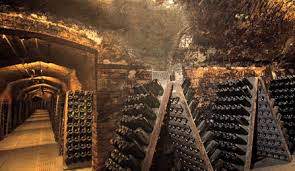

Having been a great lover of Cava from Spain, it has always disappointed me that the Cava producers of Spain have allowed their product to be devalued – and that they lost out to the Italians when Prosecco came along and won the “accessible sparkling wine award”, as the go-to party fizz.
Cava is as close to Champagne as we are allowed to call it! In fact, colloquially the Spanish refer to is as “Champán”. Made from the same grapes, fermented in the same way (Methode traditionnelle, né Champenoise) i.e in the bottle, Cava was always the more authentic product. Well, in my opinion! After all, ever since Josep Raventós returned to his homeland in Penedès, in Cataluña, in 1872 from Champagne where he learned how to make sparkling wine, Cava has been produced this way.
After so many years discussing with colleagues the fact that Cava needs a re-brand in order to fully reflect its quality, it looks like the younger generation of winemakers in Penedes, near Barcelona, have figured out a way. And it is, interestingly, a return to a more traditional wine approach to labelling:
Unlike Champagne, cava refers to a style of wine, not a place or town: in fact, more than 11 provinces across Spain produce wines which can be, legally, classified as “cava”, including Aragón, Extremadura, Castilla y León and La Rioja.
In 2012, , Pepe Raventós of the Raventós i Blanc estate, decided to abandon the “cava” denomination for his wines but to start using a regional designation that he just made up, Conca del Riu Anoia. This was designed to represent the “terroir” / the land from which his wine took its style. Sound familiar?
Other top cava producers followed suit and formed an Association called Corpinnat in 2015. They wanted to define a denomination that reflected the land where the grapes were grown, rather than being defined as “Cava” which they did not feel truly represented the wines at their best. The goal is to define and identify a style that’s true to Penedès.
So what is the result: the invention of a new style of sparkling wine?
Wine producers are now trying new grape varieties, making wine from smaller “parcelss” of grapes which basically means, using grapes from a specific area, field, vineyard, to allow the characteristics of the land to come through. They are leaving the wine to age for longer and using a the pet-nat method of natural fermentation in the bottle. But is this new?
“Pet Nat” (short for Pétillant Naturel) is a method used for eons in Champagne, where the winemaker leaves the wine to its own devices with little intervention. As with many traditional (“artisanal”) methods, it is being hailed as the new “hipster” trend for winemaking.
So is this the new name for Cava? PetNat? Really?
It has been declared that the “new cava” is a “truly unclassifiable sparkling wines that combine the savory depth and complexity of top “grower cava” (or for that matter, Champagne) with the raw energy of pét-nat”. The younger wine makers are rebelling againg the industrial winemaking methods that have produced much of the cava style wine in the past.
But what are they going to call it ? ….